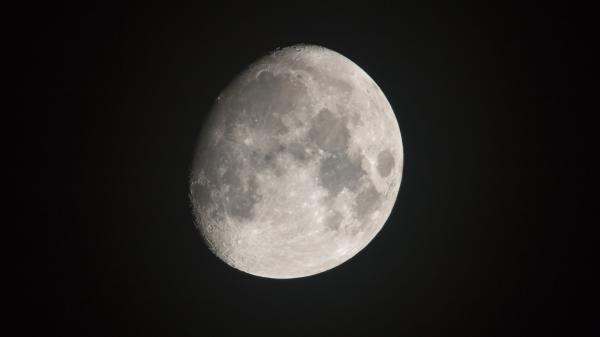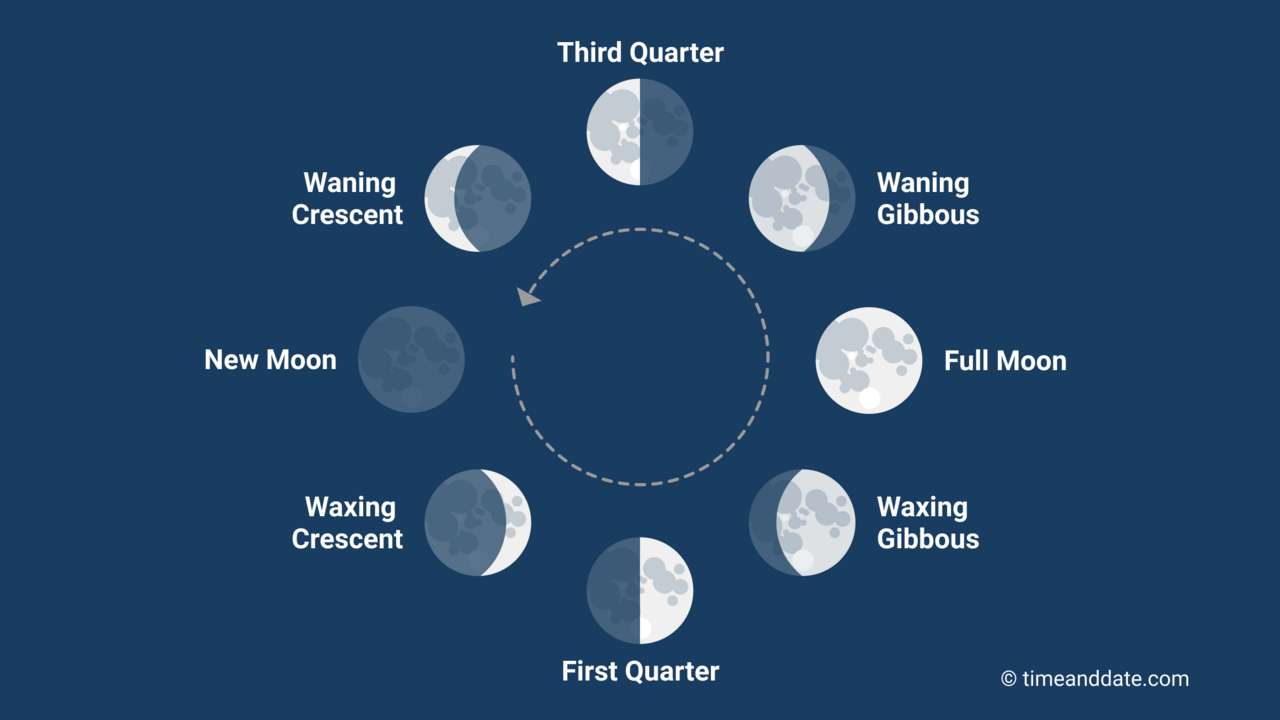Waxing Gibbous Moon
This intermediate Moon phase starts after the First Quarter Moon and lasts until the Full Moon.

During the Waxing Gibbous phase, the Moon grows from Half to Full Moon.
©iStockphoto.com/suerob
Where on the Moon is the South Pole?
Next Waxing Gibbous Moon
Starts: Dec 27, 2025 at 2:09 pm
Ends: Jan 3, 2026 at 5:02 am
Times for the Waxing Gibbous Moon vary by time zone. Times and dates are based on the local time in Columbus. Change location
With some exceptions, the Waxing Gibbous Moon rises after noon. It is usually visible in the evening and sets after midnight.
A Waxing Moon Grows
The Waxing Gibbous phase is when the lit-up part of the Moon’s face grows from about 50% to 100%. It starts just after the First Quarter Moon and lasts until the Full Moon.
Waxing means that it is getting bigger, while gibbous refers to the oval-to-round shape.
As the illuminated part of the Waxing Gibbous Moon grows to 98-99%, it can be challenging to differentiate it from a Full Moon.
Sun Lights Up the Moon
The Moon’s surface reflects the Sun’s rays, and half of it is always illuminated by sunlight. Just how much of that light we can see from Earth varies every day, and we refer to this as a Moon phase.
The Moon: Our natural satellite
The Appearance of the Golden Handle
The dividing line between the light and dark areas on any planet or moon is called the terminator.
As the terminator moves across the face of our Moon, a delicate visual effect happens about two days after First Quarter. The Sun lights up the Montes Jura peaks (a mountain range) while, below, Sinus Iridum (Bay of Rainbows) is still in darkness. The result is the appearance of a curved “handle” on the terminator, known as the Golden Handle or Jewelled Scimitar.


The Golden Handle appears on the terminator of the Waxing Gibbous Moon. You’ll need a pair of binoculars, or the zoom function on your camera.
©iStockphoto.com/BrianEKushner & ©timeanddate.com
Looks Different Around the Globe
The Moon phases are the same all over the world, both in the Northern and Southern Hemispheres. The same percentage and area of the Moon will be lit up no matter where on Earth you are.
The orientation of the Waxing Gibbous Moon depends on the time, the date, your location, and the Moon’s position in the sky. Exactly where the lit up part of the Moon appears—the top, bottom, or the side—also depends on how high the Moon is in the sky.
Is the Moon upside-down in the other hemisphere?


It takes around 29.5 days to move through the eight Moon phases.
©timeanddate.com
Lunar Month: A Repeating Moon Cycle
In western culture, we divide the lunar month into four primary and four intermediate Moon phases.
The Moon phases start with the invisible New Moon. The first visible Moon phase is the thin sliver of a Waxing Crescent Moon. Around a week later, half of the Moon’s visible surface is illuminated at First Quarter Moon.
The illuminated part continues to grow into a Waxing Gibbous Moon, until 14 to 15 days into the cycle, we see the entire face of the Moon lit up at Full Moon.
The illuminated part then gradually shrinks into a Waning Gibbous Moon, and when it reaches the Third Quarter, the opposite half from the First Quarter is illuminated. From there, it fades into a Waning Crescent Moon. Finally, the Moon disappears entirely from view into another New Moon phase, only to reemerge and repeat this cycle.
Sleep, crime, and menstruation: how Moon phases affect humans
No Gibbous Moon in Calendars
There is no symbol for the Waxing Gibbous Moon in calendars as it is an intermediate Moon phase. Only the four primary phases are shown in calendars with the following symbols:
= New Moon
= First Quarter
= Full Moon
= Third Quarter
The Moon illustration on our Moon phase pages changes as time passes and indicates more accurately, although not perfectly, the orientation of the illuminated part of the Moon.